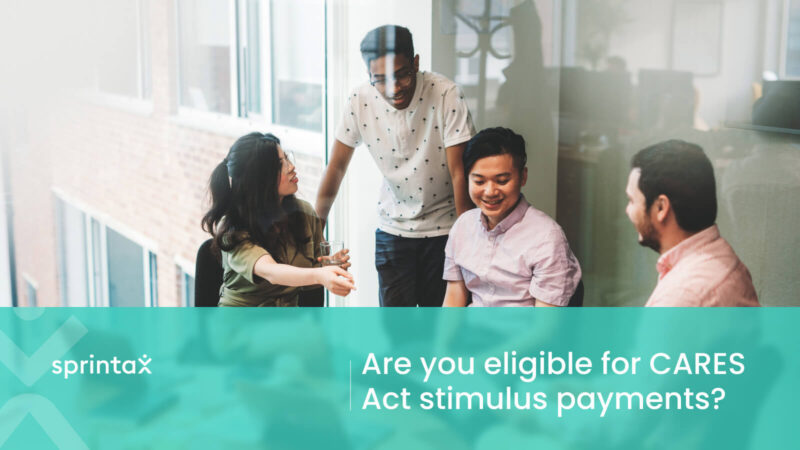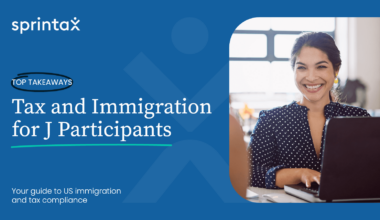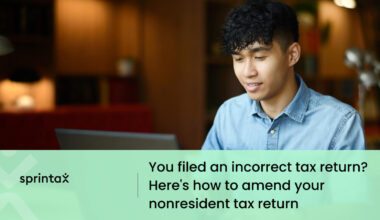Last updated: 20 January 2025
(This article was originally published on 17 April 2020)
Note: In March 2021, the US government began distributing a third round of stimulus checks – worth $1,400. If you received this check, and you are not entitled to it, you will find the advice in this article useful!
You can also read more about the second pandemic stimulus payment (worth $600) here.
Table of Contents Show
2025 Update:
In December 2024, the IRS began issuing payments for the unclaimed Recovery Rebate Credit under the American Rescue Plan Act (COVID stimulus payments) to individuals that did not file 2021/2022 tax returns.
However, many nonresidents have reported receiving these payments unexpectedly, leading to confusion.
If you recently received such a payment, it’s likely due to filing a 1040 tax return at some point after 2022. In cases like this, the IRS may have issued the payment in error.
If you were a nonresident in 2020 or 2021 and mistakenly received this payment, you are required to return the checks and provide and clarify your nonresident status for those years.
If the payment was a paper check:
- Write “Void” in the endorsement section on the back of the check.
- Mail the voided Treasury check immediately to the appropriate IRS location listed below.
- Don’t staple, bend, or paper clip the check.
- Include a brief explanation stating the reason for returning the check.
If the payment was a paper check and you have cashed it, or if the payment was a direct deposit:
- Submit a personal check, money order, etc., immediately to the appropriate IRS location listed below.
- Write on the check/money order made payable to “U.S. Treasury” and write Third EIP, and the taxpayer identification number (social security number, or individual taxpayer identification number) of the recipient of the check.
- Include a brief explanation of the reason for returning the EIP.
For your paper check, here are the IRS mailing addresses to use based on the state:
| If you live in… | then mail to this address |
|---|---|
| Maine, Maryland, Massachusetts, New Hampshire, Vermont | Andover Internal Revenue Service 310 Lowell St. Andover, MA 01810 |
| Georgia, Iowa, Kansas, Kentucky, Virginia | Atlanta Internal Revenue Service 4800 Buford Hwy Chamblee, GA 30341 |
| Florida, Louisiana, Mississippi, Oklahoma, Texas | Austin Internal Revenue Service 3651 S Interregional Hwy 35 Austin, TX 78741 |
| New York | Brookhaven Internal Revenue Service 1040 Waverly Ave. Holtsville, NY 11742 |
| Alaska, Arizona, California, Colorado, Hawaii, Nevada, New Mexico, Oregon, Utah, Washington, Wisconsin, Wyoming | Fresno Internal Revenue Service 3211 S Northpointe Dr. Fresno, CA 93725 |
| Arkansas, Connecticut, Delaware, Indiana, Michigan, Minnesota, Missouri, Montana, Nebraska, New Jersey, Ohio, West Virginia | Kansas City Internal Revenue Service 333 W Pershing Rd. Kansas City, MO 64108 |
| Alabama, North Carolina, North Dakota, South Carolina, South Dakota, Tennessee | Memphis Internal Revenue Service 5333 Getwell Rd. Memphis, TN 38118 |
| District of Columbia, Idaho, Illinois, Pennsylvania, Rhode Island | Philadelphia Internal Revenue Service 2970 Market St. Philadelphia, PA 19104 |
| A foreign country, U.S. possession or territory, or use an APO or FPO address, or file Form 2555 or 4563, or are a dual-status alien. | Austin Internal Revenue Service 3651 S Interregional Hwy 35 Austin, TX 78741 |
What you need to know about the CARES Act
In response to the COVID-19 pandemic, the US government introduced the CARES (Coronavirus Aid, Relief and Economic Security) Act in April 2020.
In short, the CARES Act is a stimulus package which aims to support workers (earning less than $75,000 per year) with a one-time payment of $1,200.
Married couples (who file jointly and earn less than $150,000) will receive $2,400 and families will also get $500 per child.
Taxpayers who have filed US tax returns in 2018 or 2019 have already begun to receive CARES payments.
With that in mind, in this guide, we’ll take a closer look at the CARES payment, who is entitled to receive it, and what you should do if you receive the payment when you are not eligible.
As always, if you have any questions about US tax, our Live Chat team are available to support you 24/7. Just get in touch!
Who is entitled to receive the CARES payment?
In short, the CARES Act can be claimed by US citizens, permanent residents and residents for tax purposes (individuals who can pass the Substantial Presence Test) who have a valid Social Security Number (SSN) and who have filed their 2018 tax return (in 2019), or their 2019 return (in 2020) and who will be considered a qualifying resident alien for the 2020 tax year.
Are nonresident aliens entitled to avail of the CARES Act?
No. Nonresident aliens are not eligible to receive this stimulus.
You will also not be eligible for this payment if you are:
- An individual who can be claimed as a dependent by another taxpayer
- An estate or trust
- Part of a married couple where one partner has an SSN and the other has an ITIN or no number (unless one spouse is a member of the armed forces)
How can I determine whether I am a resident or nonresident alien for tax purposes in the US?
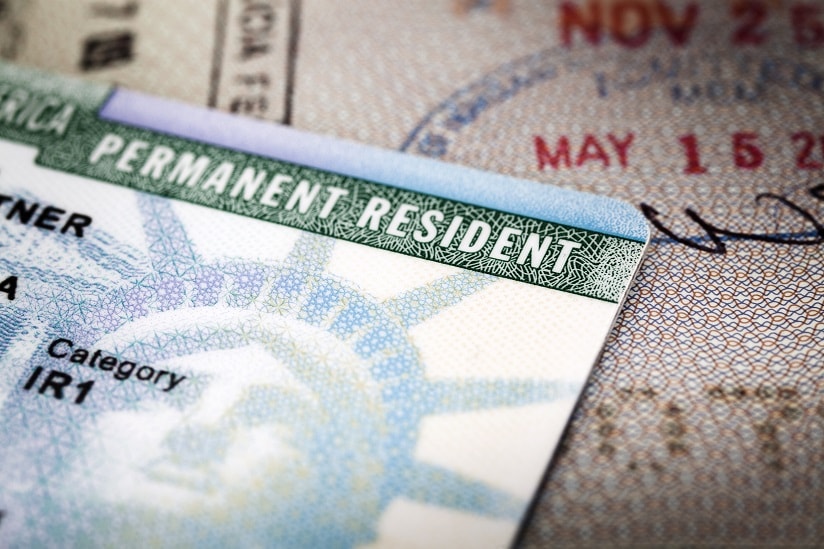
In short, you are a resident alien for tax purposes if you pass either the Green Card or Substantial Presence Tests:
The Green Card Test
If you hold a Green Card you are authorized to live and work in the US on a permanent basis and are considered a resident alien for tax purposes.
The Substantial Presence Test
Alternatively, if you spend 31 days in the US during the current year and 183 days during the three-year period that includes the current year and the two years immediately before that, you will also be considered a resident alien.
However, it’s important to note that there are exemptions for time spent in transit (less than 24 hours in the US), time during which the person could not leave because he or she required medical treatment, as well as for teachers and students (on F, J, M, or Q visas) who haven’t stayed in the US beyond a certain period of time.
Complete the Substantial Presence Test for free with Sprintax.
In Summary
If you visited the US to live, study or work as a nonresident – for example as an international student or J-1 program participant – and you do not pass the Substantial Presence Test, you will not be entitled to benefit from the CARES Act.
Are F-1 students eligible for stimulus checks?
I’m an international student in the US. If I pass the Substantial Presence Test, will I be entitled to receive a stimulus check?
The IRS has not published any information which excludes the ‘international’ community in the US from benefiting from the CARES Act.
So, if you pass the Substantial Presence Test, and you have been in the US long enough to be considered a resident for tax purposes, it is likely that you will be entitled to receive a stimulus check.
In 2018 I mistakenly filed my tax return as a resident. I should have filed as a nonresident alien. I have now received the CARES payment. What should I do?
Firstly, don’t worry, you are not alone!
If you filed as a resident by mistake, all you need to do is file an amended tax return for each year that you filed incorrectly and pay any tax liability that you owe.
The IRS receives thousands of amended returns each year. The process of filling out a 1040X online is relatively straightforward and is very easy to do online with Sprintax.
If you believe that you have received the stimulus payment in error, it is probably best to return the payment to the IRS.

How to return the CARES stimulus check you received in error
It is important to return the stimulus payment if you believe that you received it in error.
You should return the payment separately to your amended return. In other words, the IRS is advising that you do not add the CARES payment to the check or electronic transfer you submit to cover your tax liability.
Instead you should follow the directions below.
If you received the payment as a paper check and have not yet cashed it:
- Write “Void” in the endorsement section on the back of the check.
- Mail the voided Treasury check immediately to the appropriate IRS location listed below.
- Don’t staple, bend, or paper clip the check.
- Include a note stating the reason for returning the check.
If you received the payment as a paper check and cashed it, or if you received the payment as a direct deposit:
- Submit a personal check, money order, etc., immediately to the appropriate IRS location listed below.
- Write on the check/money order made payable to ‘U.S. Treasury’ and write ‘2020EIP’, and your taxpayer identification number (social security number, or individual taxpayer identification number).
- Include a brief explanation of the reason for returning the payment.
Where to return the payment?
If you live in:
1. Maine, Maryland, Massachusetts, New Hampshire or Vermont:
You should mail to this address:
Andover Refund Inquiry Unit,
310 Lowell St Mail Stop 666A,
Andover, MA 01810
2. Georgia, Iowa, Kansas, Kentucky or Virginia:
You should mail to this address:
Atlanta Refund Inquiry Unit,
4800 Buford Hwy,
Mail Stop 112,
Chamblee, GA 30341
3. Florida, Louisiana, Mississippi, Oklahoma or Texas:
You should mail to this address:
Austin Refund Inquiry Unit,
3651 S Interregional Hwy 35,
Mail Stop 6542,
Austin, TX 78741
4. New York:
You should mail to this address:
Brookhaven Refund Inquiry Unit,
5000 Corporate Ct.
Mail Stop 547,
Holtsville, NY 11742
5. Alaska, Arizona, California, Colorado, Hawaii, Nevada, New Mexico, Oregon, Utah, Washington, Wisconsin or Wyoming:
You should mail to this address:
Fresno Refund Inquiry Unit,
5045 E Butler Avenue,
Mail Stop B2007
Fresno, CA 93888
6. Arkansas, Connecticut, Delaware, Indiana, Michigan, Minnesota, Missouri, Montana, Nebraska, New Jersey, Ohio or West Virginia:
You should mail to this address:
Kansas City Refund Inquiry Unit,
333 W Pershing Rd,
Mail Stop 6800, N-2,
Kansas City, MO 64108
7. Alabama, North Carolina, North Dakota, South Carolina, South Dakota or Tennessee:
You should mail to this address:
Memphis Refund Inquiry Unit,
5333 Getwell Rd
Mail Stop 8422,
Memphis, TN 38118
8. District of Columbia, Idaho, Illinois, Pennsylvania or Rhode Island:
You should mail to this address:
Philadelphia Refund Inquiry Unit,
2970 Market St,
DP 3-L08-151,
Philadelphia, PA 19104
9. A foreign country, U.S. possession or territory*, or use an APO or FPO address, or file Form 2555 or 4563, or are a dual-status alien:
You should mail to this address:
Austin Refund Inquiry Unit,
3651 S Interregional Hwy 35,
Mail Stop 6542 AUSC,
Austin, TX 78741
Finally, it’s a good idea to include a cover note with your amended tax return to confirm why you are returning the payment.
You should also keep copies of everything that you send to the IRS – both physical and electronic. They may be required for any visa applications you submit in future.
I filed as a resident in 2018 but I have since left the US. I received the CARES payment to my American bank account. Am I entitled to keep this money?
Countless international students and scholars who had filed (either correctly or incorrectly) as residents for the 2018 tax year, and since left the US, have received the $1,200 payment.
However, if you have left the US and you will not be considered a qualifying resident alien for the 2020 tax year, you are not eligible for this payment.
In this scenario, you should return the payment to the IRS.
How do I file an amended US tax return?
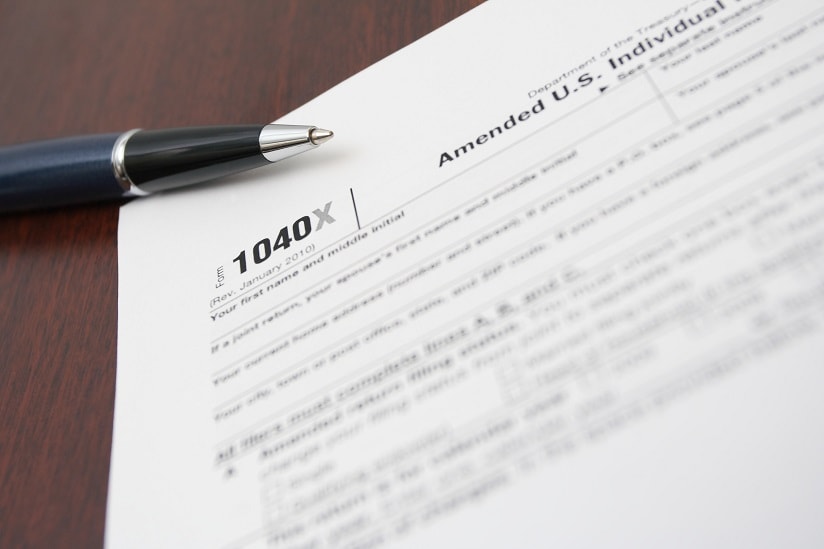
You should file a Form 1040X in order to amend the federal income tax return that you filed previously.
Form 1040X is two pages long and you are only required to include new or updated information.
You will also find a space where you can write an explanation as to why you are amending your return.
Here’s everything you need to know about amending a tax return
Who can help me file an amended US tax return?
You can easily amend your US tax return using Sprintax!
You can check our step by step guide to using Sprintax to amend your tax return.
Amend Your Nonresident Tax Return with Sprintax
https://www.youtube.com/watch?time_continue=41&v=kgYd6Wql-KQ&feature=emb_title


